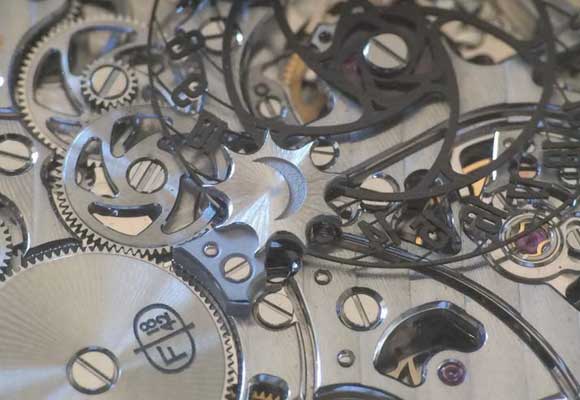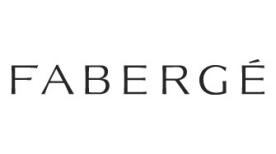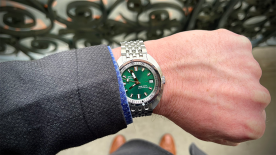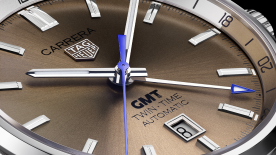Jean-Marc Wiederrecht of Agenhor had built up a solid reputation in the development of modules that could be added to base movements to add new complications and functions to a watch. He had always resisted the temptation to develop a movement, in spite of a number of ideas. “People told me to start simple,” he says, “but I though that developing a base movement was out of the question for the small production volumens I deal with, so I ended up doing quite the reverse, producing a five-minute repeater movement with three barrels.” The movement in question premiered in 2012 this in the Van Cleef & Arpels Poetic Wish. It is perhaps no coincidence, therefore, when Fabergé’s young Timepieces Director Aurélie Picaud, would not take no for an answer from Mr Wiederrecht when she was looking for a partner to develop a whole new watch range for the brand at the end of 2013. The challenge was even harder, since it also involved coaxing Mr Wiederrecht out of semi-retirement.

In the end, a combination of instinct and a great project got the boss of Agenhor on board, with the first priority being to produce a talking piece for ladies… for Baselworld 2015, which was just a year away. The Fabergé Lady Compliquée Peacock was born, recalling the Fabergé Peacock Egg of 1908, and went on to win the Ladies’ High-Mech prize at last year’s Geneva Watchmaking Grand Prix. For Jean-Marc Wiederrecht, the resounding success of the project against the odds is proof that “human intelligence and sentiment is more powerful than any machine or computer.” It is also testament to the “start-up” mentality that Fabergé CEO Sean Gilbertson (read our interview) has instilled into his team. “It is the whole structure that makes the difference,” Jean-Marc Wiederrecht confirms.
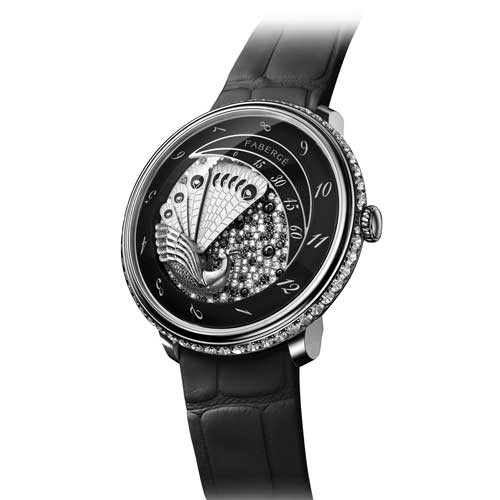
From modules to movements
The boss of Agenhor admits that having a number of ideas and patents in the pipeline helped with the transition from a supplier of modules to a movement producer. After throwing out the rule book for the Poetic Wish, where the hammer and gongs for the minute repeater were located unusually in the centre of the watch, he did the same with the GPHG-winning Lady Compliquée Peacock, which has a patented mechanism to display the hours and minutes by unfurling the engraved feathers of a peacock.
This year, Fabergé presented two highly distinctive designs based around a common architecture that places unconventional items at the centre of the watch. In the case of the Lady Levity, the centre of the watch is dominated by a large mother-of-pearl moon, while in the Visionnaire DTZ (a sure contender in the new Travel Time category for this year’s GPHG) it houses a unique second-time zone display. In both cases, the movement can be seen through a transparent case-back. Yet in the case of the Visionnaire DTZ the movement is in fact self-winding, with the energy supplied by a dial-side rotor that is barely perceptible. This theme, which involves placing a functional or decorative element at the heart of the dial, where we would usually expect to find the central axis for the hands, will emerge again in the 2016 collection. We can’t wait to see what Fabergé’s talented workmasters have in store for us.
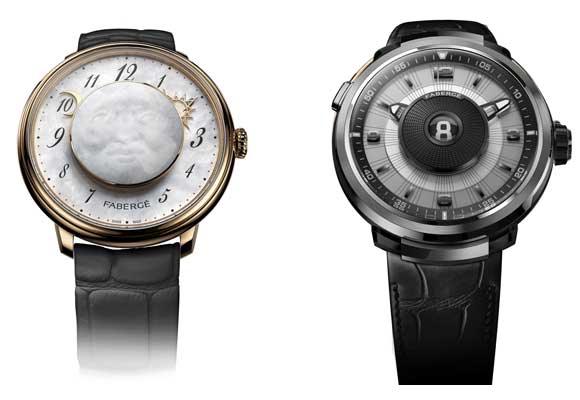
The devil is in the detail
The cam that powers the instantaneous jumping hour of the Visionnaire 1 DTZ, hidden in the depths of the movement, has a circular wheatsheaf engraved on it. The lever that tracks the 60-minute rotation of this cam is part of a sector that has been designed to resemble a peacock and thus create a hidden link with the heritage of the brand, throughout which the peacock appears frequently. Furthermore, the energy for the instantaneous second-time zone change is accumulated over the entire hour between jumps, which is unusual in a jumping hour complication.
Because the second time zone is visible at the centre of the dial, the diameter of the disc bearing the 24-hour second-time zone scale could not exceed half the diameter of the movement itself. As a result, the numerals on this disc are very small: a mere 1.5mm in height, to be exact. So Jean-Marc Wiederrecht had to find a way to magnify them so that they were actually legible. “We were fortunate in that the construction allows us to place the focal point of the magnifier seven millimetres away from the 24-hour disc,” he explains, “which is quite a significant distance at this scale. By using optical phenomena, therefore, we could magnify the size of the numerals to four millimetres. Because of the inherent problems of light reflection in a watch, however, on our first attempts you could see almost all the numerals at the same time! So with the help of university researchers we were able to develop a central tube with a complex geometry that eliminated any distortion or reflection.”
